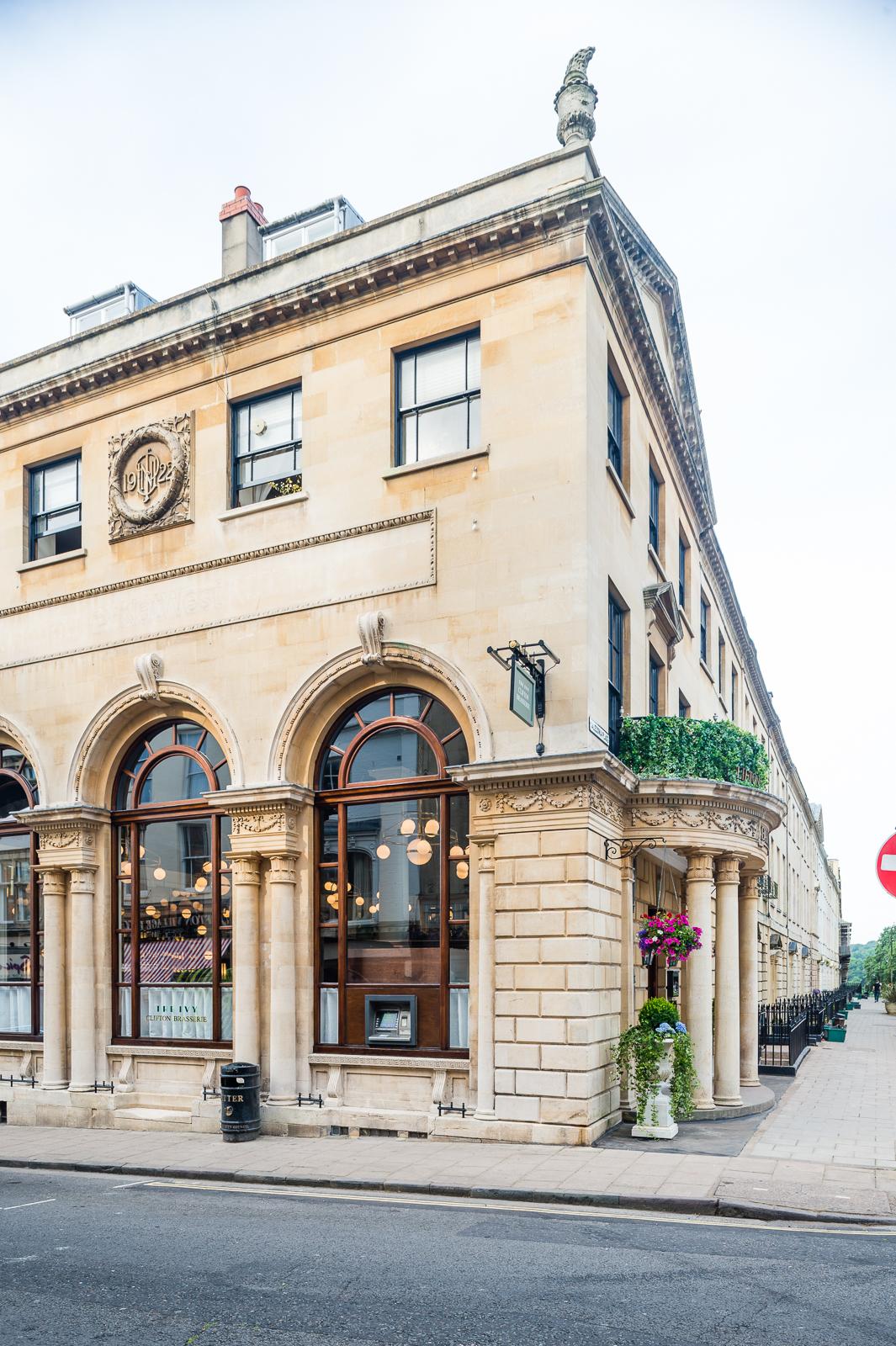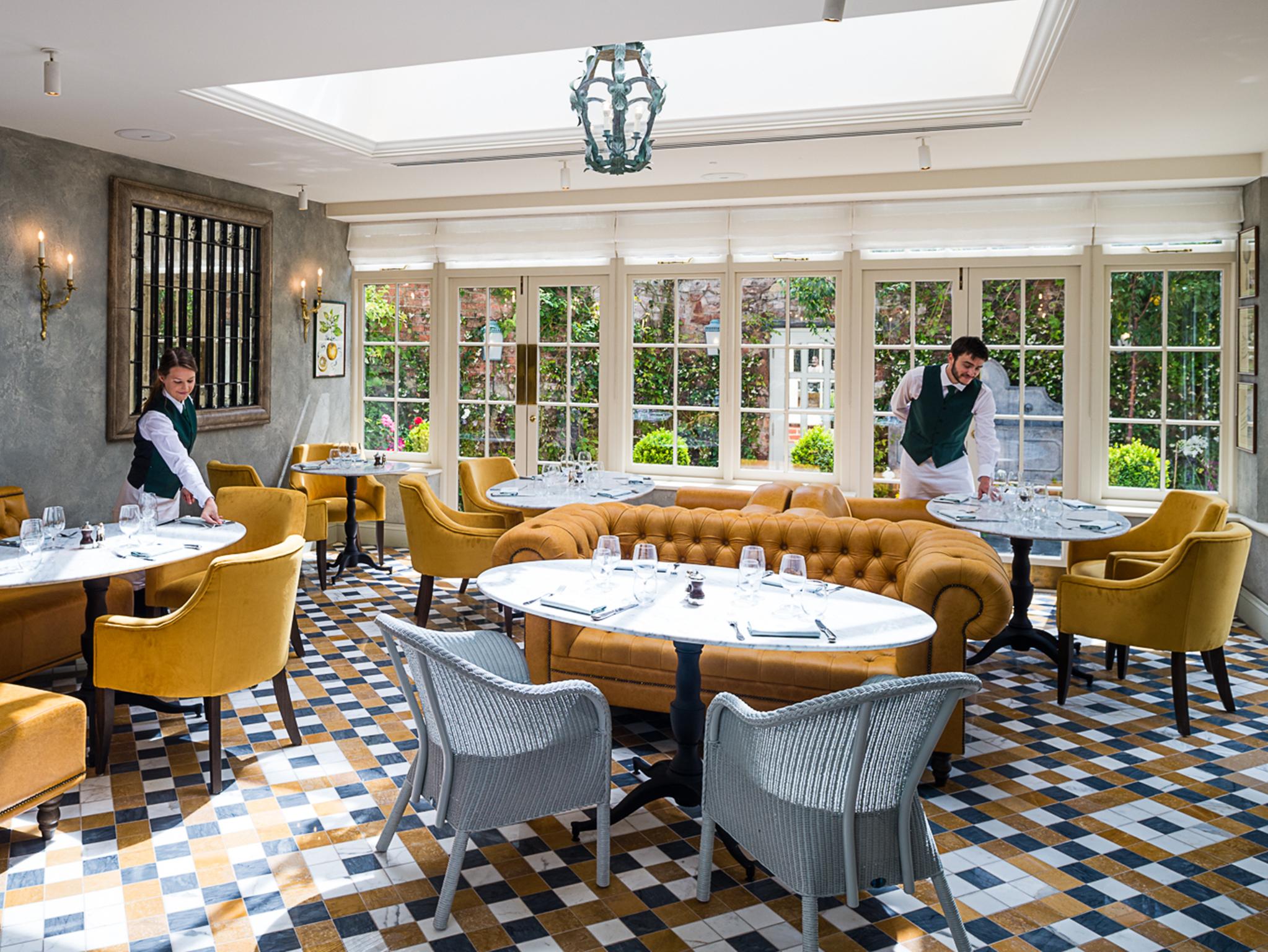The Ivy comes to Bristol: West-End glamour in the south west
When classic restaurants branch out, do they lose some of their charm? Philip Sweeney explores the new Ivy restaurant in Bristol

Why Bristol? Mark Hix, sitting in the bar of his number two steak and chicken joint Hixter Bankside behind the Tate Modern reflects unhurriedly. He’s just mentioned his plan to open a restaurant in the city “in a couple of years time” to add to a portfolio of around eight properties, flagshipped by the prototype chicken and steak outlet Tramshed with its crowd-pulling Damien Hirst installation. “Well, it’s convenient, it’s on the coast, there’s a booming clientele of young professionals decentralising from London, and the London restaurant scene is already so overcrowded and expensive…” And yes, he agrees there’s a sort of buzz about the Bristol’s food scene. Music for the ears of the claque of bloggers and tweeters who amplify every mention of the city emanating from the numerous resident food media – Telegraph and Guardian, BBC radio and TV food programme-makers – into a babble of excitement which has given birth to the appellation Bristol Foodie Paradise even before Hix hits town.
I’m talking to Hix in part to get his views on the problems of duplicating famous restaurant brands, in the context of Bristol’s very latest talking point, the city’s new outpost of the celebrated West End showbiz haunt The Ivy. Hix oversaw the running of the Ivy as Chef Director for a decade and a half but he won’t be drawn on former associates, apart from to affirm the obvious: you’ve got to beware of diluting a brand to the point of undermining its prestige. It wouldn’t do to have Ivies, or Hixters, in shopping malls and airports. Ask Antonio Carluccio about that, Hix suggested. And what about the impact on the food itself? Is maintaining consistent quality throughout a number of restaurants a major problem? Not if you employ good people and keep constantly in touch with them says Hix.
OK, so back down West. The post War evolution of the Bristol suburb of Clifton has followed a steady ascent, or descent depending on taste, from crumbling Bohemian gentility to the lower threshold of bling, with once semi-slum Georgian terrace houses soaring past the million pound mark, and the old greengrocers and pubs making way for smart clothes shops, yet more estate agents and branches of Strada and Côte. The opening of The Ivy Clifton Brasserie is another significant milestone. This is the latest property in the portfolio of Caprice Holdings, the company which has just launched the notorious Sexy Fish in Berkeley Square, its newest London property, a fish restaurant in roughly the way a gold-plated Bugatti Veyron is a car.

The new Ivy brings Bristol into the empire of the UK’s most prolific and energetic catering mogul. Starting forty years ago from a self made fortune in high street clothes manufacturing, Richard Caring has wheeled and dealt his way through swathes of prime international restaurant and club territory, a leading player among a small coterie of top entrepreneurs; men like Luke Johnson, Piers Corbyn and Jeremy King, who create, buy and sell chains like Strada, Belgo and Côte as well as individual icons such as the Caprice, J Sheekey, or Scotts. In 2005 Caring snapped up the Ivy, a famous old theatreland classic which had been successfully relaunched by Corbyn and King, and since then has added the collections of Annabel’s, Soho House and much more to a vast international portfolio of brands which the critic AA Gill has likened to a gastronomic version of the French luxury goods empire Louis Vuitton Moët Hennessy.
In the naive hope of asking Richard Caring about his take on Bristol Foodie Paradise, I called Caprice Holdings, to be told politely of his strict no interviews policy. With a little forethought, I might have realised that if Caring was ever going to make an exception, the week of the pillorying of fellow rag-trade multimillionaire Sir Philip Green was probably not the time he’d choose. Caring and Green are old friends and business associates, reportedly exchanging Ferrari birthday presents and rides to and from the Maldives in their personal planes like rounds of gin and tonic at the golf club.
In fact, a Caprice Holdings spokesperson explained, for some reason off the record, the company didn’t want to encourage national press coverage of the new restaurant at all, as the Ivy Brasserie brand, along with a range of Ivy Cafes and Ivy Market Grills, is quite distinct from the original historic Ivy and mustn’t be seen as an attempt at a duplicate.
Fair enough, and indeed true in practice. Comparing the original Ivy off Saint Martin’s Lane with the first of the spin-offs, the Ivy Kensington Brasserie, is not instructive. The centenarian mother restaurant, occupying its slender red-brick corner premises opposite the almost equally-old theatrical neon advertising of The Mousetrap, thoroughly justifies its reputation as a classic, from the elegant and discreet premises, beautifully lit by the diffuse glow from the two walls of translucent diamond paned windows, to the calm efficient service. The food is simple and correct; an impeccable lunch of beetroot salad, with a proper light but oily vinaigrette, and an escalope of veal Holstein with pommes allumettes. All unencumbered by selfie-ists, staff badgering for affirmations of all-rightness, even intrusive thespians; it’s just an old-school restaurant of the highest order, if obviously not cheap.
The Ivy Kensington Brasserie is very different. Not bad at all, just not as good as its role model. The ersatz 1930s nature of the interior is brought home by the modern office building location, with an Iranian bank and a Marks and Spencer for neighbours, in place of theatreland, and the food, though perfectly adequate, is served a touch raggedly, by contrast to the suavity of the real McCoy.
On Tuesday, the veil was finally lifted on the first provincial Ivy, with a series of pre-opening receptions at the Bristol restaurant. Under the curious gaze of the members of the grand old-money Clifton Club across the road, a stream of local TV personalities, estate agents, restaurateurs and unfeasibly large quantities of blonde women in tight frocks, stilettos and tans filed into the great airy Georgian bank premises to sip sloe, rose and hibiscus flavoured Kirs Royales, scoff wasabi king prawns, truffle gougeres and marvel.
The décor does inspire a degree of awe. The Clifton brasserie is in effect a much more successful version of the Kensington one, partly due to the character of the great airy cube of the central room, lit from two sides by rows of tall, arched windows and floored in gleaming new chequered marble and parquet. The place is kitted out with mustard leather banquettes, a clever dark blue ceiling frieze, walls full of mirror and closely crammed period graphics – the work of Martin Brudnizki Design, the firm responsible for a swathe of the most celebratedly lavish interiors from Mayfair to Miami via Dubai. It’s in effect the most heavyweight piece of restaurant glamour to hit Bristol since the Seventies when top Paris designer Slavik converted another decommissioned bank on Corn Street into a restaurant, which is still functioning, nowadays as The Ox, a sort of Bristolian Hawksmoor tribute act. Food-wise it’s too soon to tell. The breakfast-to-supper menu, with main courses running from shepherd’s pie to grilled lobster, looks sensibly demotic, except when it comes to the afternoon menu: surely even nouveau Clifton will balk at £26 champagne cream teas.
The reaction of Bristol, of course, remains to be seen. Plenty of Cliftonians seemed thrilled, not least the local florist Belle de Jour, who’s landed a nice contract supplying two bouquets per week, as well as carrying out six-monthly services of the massive central arrangement, which turns out to be artificial, sent down from Caprice Holding’s London florist with instructions on periodic refreshment with eucalyptus fronds.

The occasional murmur of resentment is discernible among restaurateurs, but also a feeling that the overall critical mass as a restaurant destination can only be enhanced. Up the road at the local branch of Côte, the replica brasserie chain once part owned by Richard Caring and now most likely to be hit by the newcomer, the duty manageress was seeking solace in numbers. “There are eighty Côtes, only a handful of Ivies,” she said. I resisted the temptation to mutter darkly: “Give them time.”
In any case the Ivy is not the only predator threatening Bristol, merely the flashiest. Marco Pierre White has just opened a rustic Italian to join the gang of Jamie’s, Carluccio’s, Blanc’s et al. And in a few weeks time the Strada de nos jours, Polpo, the firm which took the replica Venetian bacaro formula to Soho, Harvey Nichols and soon the world, hits Whiteladies Road with its distressed tables, white tiles, and Northern Italian small plates. Russell Norman, the Polpo founder, was also unavailable for comment this weekend, busy entertaining the punters at the Earl of Saint Germans’ Port Eliot Festival in Cornwall with a pop-up Polpo. But he should be aware he’s only just ahead of the game. Replica bacaros are already springing up like aperol spritzs as far north-west as Liverpool. Including one, bizarrely, listed at the Celtic Springs Retail Parade, Newport, though this seems to be temporarily inoperative, perhaps in the throes of take-over by Richard Caring for the first Ivy Services on the M4.
Join our commenting forum
Join thought-provoking conversations, follow other Independent readers and see their replies
Comments
Bookmark popover
Removed from bookmarks